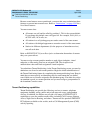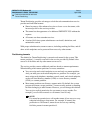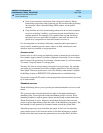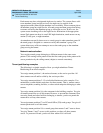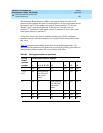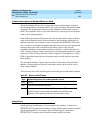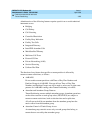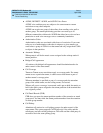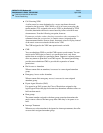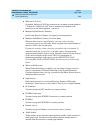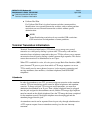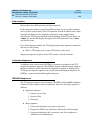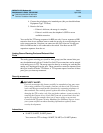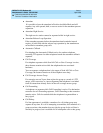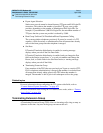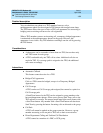
DEFINITY ECS Release 8.2
Administrator’s Guide
555-233-506
Issue 1
April 2000
Features and technical reference
1545Tenant Partitioning
20
■ Call Vectoring/VDN
A caller routed to a new destination by a vector step hears the music
assigned to the last active VDN. While a call is in vector processing, the
tenant number (TN) assigned to the active VDN (as determined by VDN
Override) determines the music source heard by callers on hold in most
circumstances. Note the following exception, however.
If you use a wait-time <time> hearing <extension> then <treatment 2>
command where the <extension> is a music source (assigned on the
Announcements/Audios Sources form), that music source will play instead
of the music source associated with the active VDN.
The COR assigned to the VDN must permit music-on-hold.
■ CMS
You can administer CMS to provide CMS reports to each tenant. You can
restrict each CMS login to control, on a permission basis, only those
entities that are assigned to a particular tenant. Outputs to separate printers
allow any tenant to print their own CMS reports. The tenant-partitioning
provider must administer CMS to provide this separation of tenant
permissions.
■ Dial Access to Attendant
When a tenant dials an attendant, it accesses its own assigned attendant
group.
■ Emergency Access to the Attendant
When a tenant dials emergency access, it accesses its own assigned
attendant group.
■ Expert Agent Selection (EAS)
For agents in an EAS system, the Class of Restriction assigned to the
logical agent ID (not the physical extension) determines whether callers on
hold can hear music.
■ Hunt groups
The tenant number assigned to the hunt group extension determines the
music source callers to the hunt group hear while they’re in queue or on
hold.
■ Intercept Treatment
When access to the attendant is designated as intercept treatment, the caller
accesses their assigned attendant group.



